OXIGEN salud
Mechanical ventilation
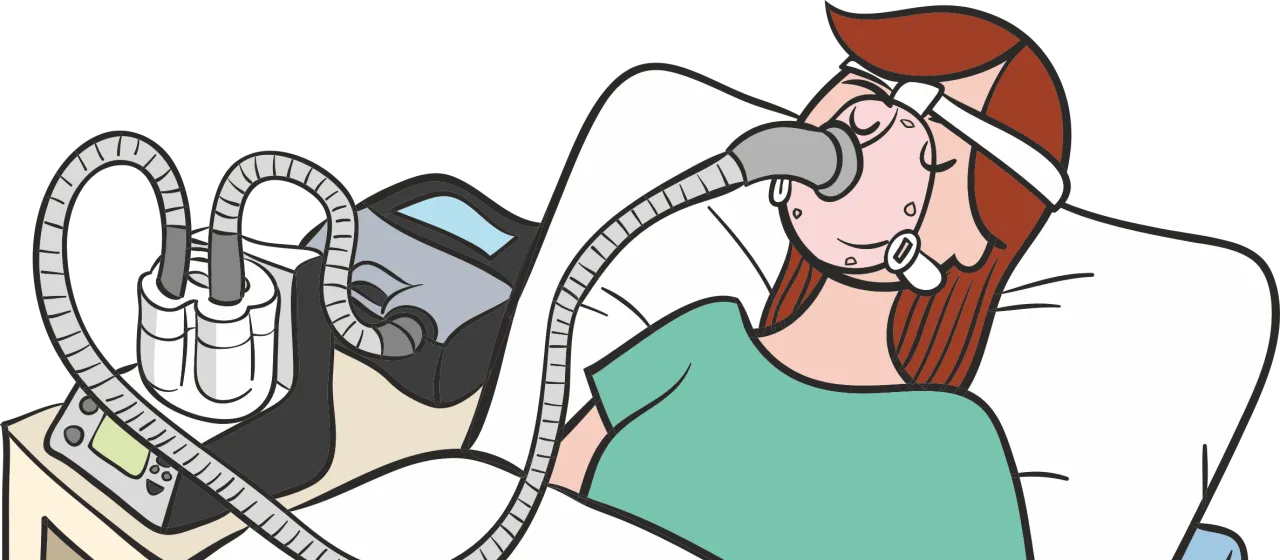
OXIGEN salud
Mechanical ventilation
Non-invasive mechanical ventilation (NIV) is a positive airway pressure treatment where the patient is connected to the ventilator through an interface attached to a tube. A wide range of interfaces are available, including nose, mouth and face masks, nasal pillows (small cushions that cover the nostrils), mouthpieces, lip seals and other mouth devices. Nasal and face masks can even be made to measure, though the quality and variety of standard masks available today on the market makes them by far the most commonly chosen option.
The main advantage of non-invasive mechanical ventilation (NIV) is that it does not require an opening in the neck (tracheostomy), which can become a site of infection or irritation. In addition, it allows the patient to speak and swallow normally (if they are not affected by a neuromuscular disorder), it preserves the senses of smell and taste, and it reduces the need for a personal carer, carers in the family and related nursing care.
The most significant disadvantage is the fact that the patient’s mouth and/or nose are covered by the interface. Other disadvantages include possible obstruction of the upper airways, inability to tolerate the mask or claustrophobia, and safety issues if 24-hour mechanical ventilation is required. NIV may not be effective when secretions are abundant and when there is a progressive deterioration in the muscles responsible for swallowing, speaking and coughing (bulbar palsy). Therefore, an effective cough that eliminates secretions is essential for NIV to work.
Selecting the right type of mask is crucial, in terms of both the patient’s comfort and the efficacy of the ventilation. It must:
In terms of advantages, the nasal mask is easy to use, it causes less claustrophobia, it allows the patient to expectorate without removing the mask, and in the event of vomiting, there are fewer possible complications. It also adds very little dead space, thanks to its compact size. However, a significant disadvantage is the risk of leaks due to an inadequate seal around the mask – which can be avoided by ensuring the mask headgear or cap fits properly – or leaks through the mouth, which can sometimes be eliminated with a chinstrap or a face mask.
As it covers both the nose and mouth, the main advantage of the face mask is that it prevents leaks through the mouth in patients who breathe through their mouth. On top of that, it can offer higher support pressures with less leakage, and it requires less collaboration from the patient. The disadvantages of the face mask are its uncomfortable, bulky design, which often causes claustrophobia and creates more dead space. In addition, leaks can sometimes occur due to a poor fit between the mask and the patient’s face.
The mouthpiece, meanwhile, allows the patient to talk and clear any secretions. It is associated with some side effects, though, such as mouth dryness, higher risk of aspiration, altered dental occlusion and problems with the temporomandibular joints (TMJ). This type of interface is especially useful when the patient is highly dependent on the ventilator. However, it is unlikely to be tolerated for more than sixteen hours per day.
To carry out non-invasive ventilation therapy treatment with partial ventilatory support, the following is needed:
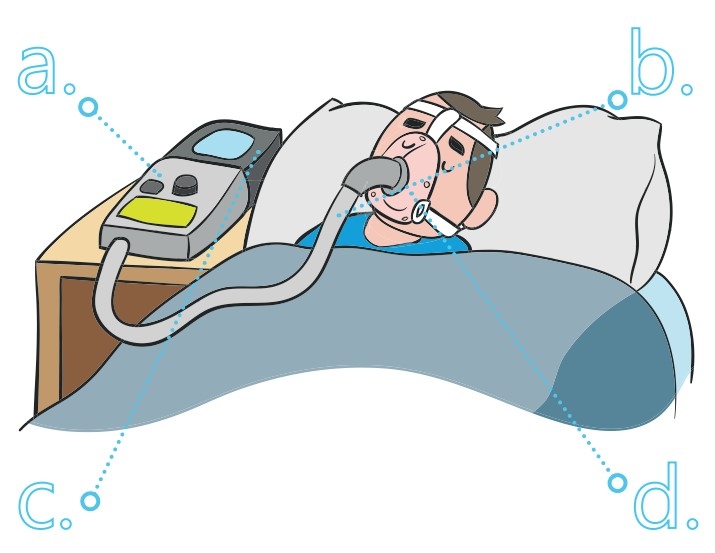
Place the ventilator on a bedside table, near the headboard, so that it cannot fall over during sleep. Make sure you do not place the machine somewhere where someone might bump into it or trip on its power cable.
Ensure the area around the machine is clean and dry. The machine should be positioned so that nothing is obstructing the air inlet found at the back of the ventilator. Connect one end of the power cable to the ventilator and plug the other into the mains.
A light will come on to indicate that the ventilator is plugged in.* Connect the tubing to the interface (and to the humidifier if this has been prescribed).
The treatment may be more comfortable for the patient if a humidifier is used to humidify the air they are breathing. The humidifier tank, which is attached to the ventilator, must be filled with distilled water up to the corresponding line. Every time the ventilator is moved, first, the remaining water must be emptied, and then, the humidifier must be disconnected.
* This depends on the model of the machine. Check the instruction manual.
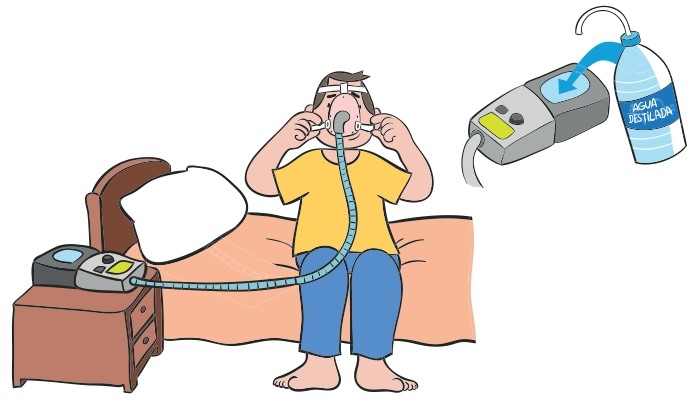
There are two types of masks:
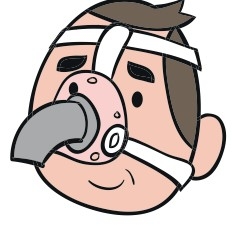
Nasal mask
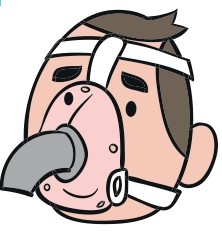
Outdoor mask
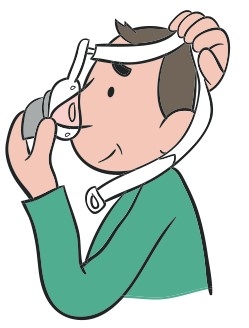
Unfasten the bottom clip on the headgear, hold the mask over your nose and pull the headgear over your head. Make sure the straps are not twisted.
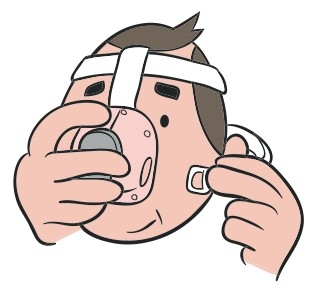
Fasten the bottom clip again and make sure it is secure.
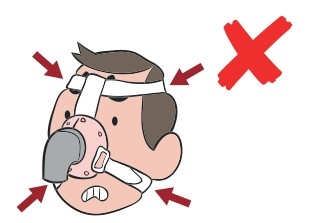
Adjust the upper straps so that they are even. Make sure they are not too tight. Adjust the lower straps until they are comfortable.
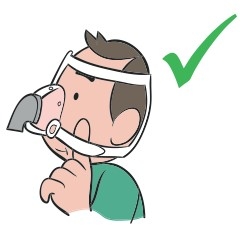
Connect one end of the tubing to the mask and the other end to the ventilator.
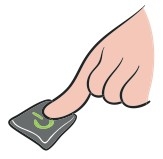
Turn the machine on and breathe normally.
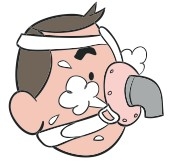
Adjust the straps to correct any leaks.
Lie down and adjust the tubing so that you can move freely if you turn over while you sleep.
There is no need to alter the headgear on the mask provided by OXIGEN salud every time you use it. The care team will fit it to your head when they install the machine.
The care team of OXIGEN salud will carry out regular checks on the equipment. However, it is important to follow the hygiene and cleaning guidelines described below, as they will make the treatment more comfortable and ensure the machine lasts as long as possible.

Before going to bed, wash your face. This will remove any excess oil before you put the mask on.
Wash the mask daily with water and mild soap. Rinse it thoroughly and leave it to dry. Store it in a clean, dry place.
The headgear can be washed with laundry in the washing machine.
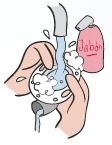
The tubing should be washed with warm water and mild soap. Rinse it thoroughly then hang it up to dry (not outside, as the plastic might get damaged). Store it in a clean, dry place.
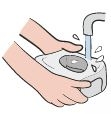
The humidifier should be washed with warm water and mild soap. Rinse it well and fill it with distilled water. The water in the tank should be changed at least every two days.
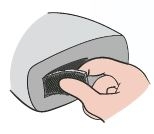
Remove the air filter from the ventilator and clean it regularly.
Unplug the ventilator and clean it regularly with a slightly damp cloth. Do not submerge the machine or its power cable in water. Always unplug the machine before cleaning it. Make sure it is dry before you plug it back in.
If the patient needs to travel, they can do so without any problems. They must always notify OXIGEN salud and follow their airline’s guidelines.
Shall we call you?